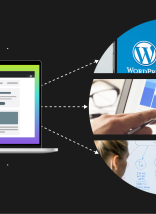Many businesses today are facing some of the toughest digital problems they have ever encountered. The combination of continuous technology evolution and explosive adoption in business have created remarkable challenges for modern executives and business owners. In addition to moving the organization forward, these challenges are sometimes significant enough to threaten basic business continuity.
A decade ago technology was often contained to individual business functions and fairly rarely exposed directly to customers. Today, that is no longer the case. As the complexity of the challenges has grown, businesses have added dozens of individual systems to perform specific business functions. Unfortunately, these systems are often disconnected and do not share data directly with the rest of the enterprise. And that creates a new set of problems that further hamper the growth of the business.
The Pressures That Create Tough Digital Problems
The key factors that are creating pressure for business leaders to continually solve tougher and tougher digital problems are security, efficiency, and customer/competitive demands. The pressures these key factors generate has never been greater and comes at a time when many enterprises are squeezing their IT budgets.
So how does a business or enterprise become leaner and more agile so they can solve tough digital problems? Unfortunately, there is no easy answer to this question but there are some specific actions an organization should take to remain competitive and avoid putting the organization in catastrophic risk territory such as what happened to Sony Pictures.
4 Keys to Solving Tough Digital Problems
- Commit to making technology a competitive advantage. Technology can either be something an organization deals with because it has to, or something an organization embraces and turns into an advantage. The first step is as simple as announcing the organization’s intention to embrace and drive technology. With clear focus and proper leadership, it will quickly grow from a liability to an asset.
- Determine roles and responsibilities. Clearly determine who in your organization is responsible for the overall technology vision. If left to their own devices, individual departments will innovate and solve their own problems. While this is normally a good thing, it can introduce new problems in the areas of security, consistency and data sharing/integration. These issues are critical to the enterprise and must be managed at the top level.
- Take a long-term view.Without clear technology standards and leadership at the top level, each new dollar spent on technology not in line with your long-term vision is unlikely to bring your organization closer to and advantage in technology. It may solve a necessary short-term problem, but it will also push your organization further from any unified technology vision.
- Create clear standards and rules for engagement. In the creative world organizations use branding and style guides as a method to create consistency across enterprise marketing and communication functions. Technology standards and rules of engagement, while a bit more complicated, play the same role for technology decisions and implementations. Developing these standards and using them within your organization will bring your technology in line with the vision and reduce the friction associated with technology.
Once your organization is on the right track, lots of individual digital problems will surface. With the proper organization and framework your business can move confidently forward and each investment in technology is much more likely to create positive ROI. Doing things that are really difficult and getting them right are what lead to enduring competitive advantages. In many cases each successive digital challenge will be made possible by the investment in the underlying framework and the ability to execute and coordinate sometimes complex operations or activities across large swaths of the enterprise.
Want to Learn More?
Atlantic BT is trusted to solve the toughest digital challenges for some of the world’s leading companies. Check out our case studies to see some of our recent work and give us a call at (919) 518-0670 or contact us to talk with one of our consultants to see how we can help with the digital challenges you are facing.






